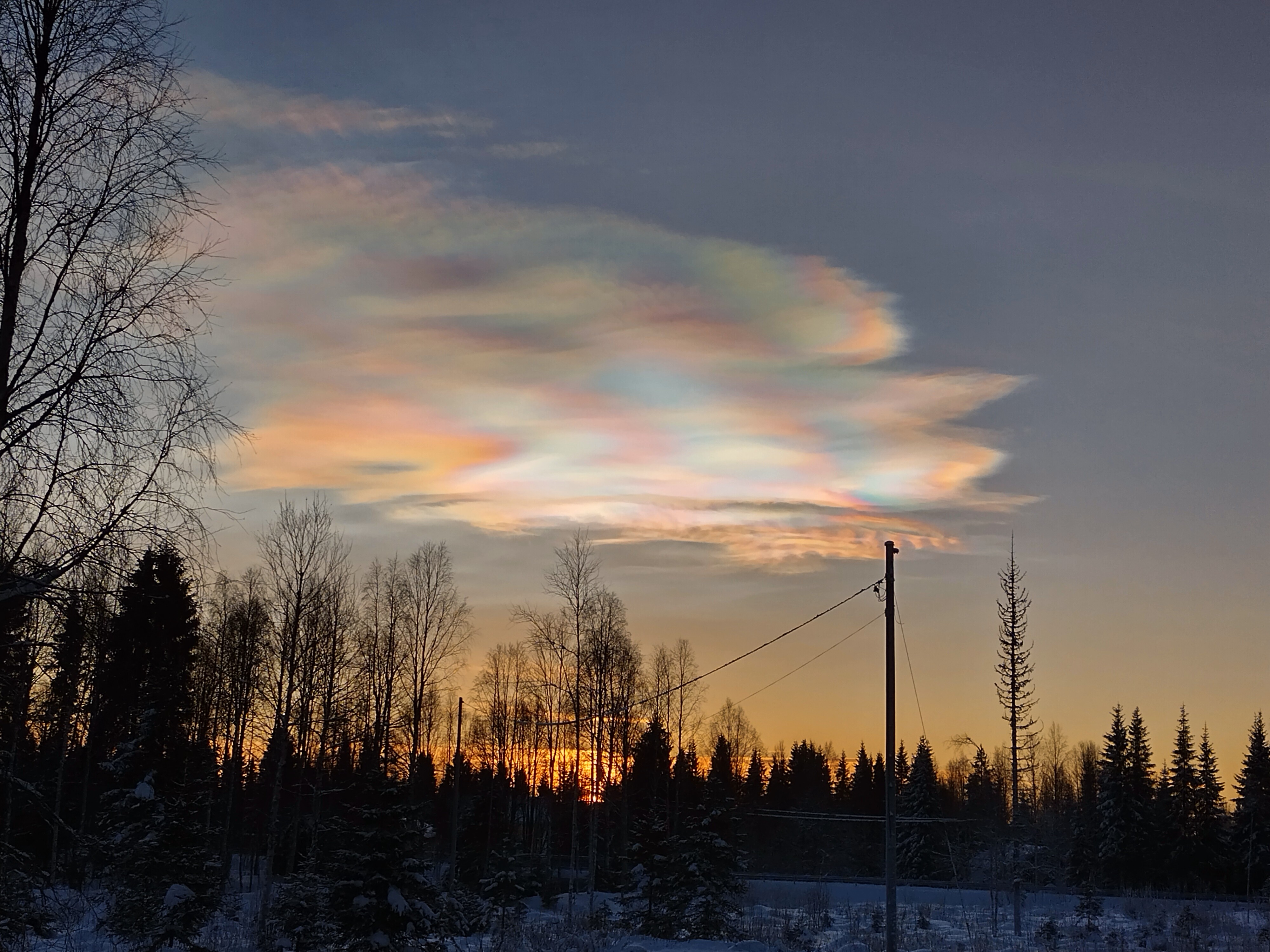Spectacular 'rainbow clouds' light up northern skies in a rare skywatching treat (photos)

Strange "rainbow clouds" that look like a colorful portal to another dimension have recently appeared across northern skies.
These nacreous clouds, also known as polar stratospheric clouds, are one of the highest in Earth's atmosphere. They're sometimes called "mother of pearl" clouds due to their striking pearlescent appearance.
Related: What are different types of clouds and how do they form?
Nacreous clouds form over polar regions in our lower stratosphere between 68,500 and 100,000 feet (13 and 19 miles or 20 and 30 kilometers) according to the UK Met Office. Most "regular" clouds exist below 43,000 feet (8 miles or 13 km)
Why so colorful? Because of their high latitude and the curvature of Earth's surface, nacreous clouds are illuminated by sunlight from below the horizon and reflect it toward the ground. Ice particles that form nacreous clouds are far smaller than those that form more common clouds. As sunlight passes through these tiny particles it diffracts and the colors are separated into different wavelengths creating the stunning 'rainbow' effect in the sky.
Nacreous clouds need very low temperatures to form — below -108 degrees Fahrenheit (-78 degrees C) and are therefore only usually visible during the polar winter.
The nacreous clouds lit up the skies above Norway, and Alister Doyle captured them from his home in Oslo.
Breaking space news, the latest updates on rocket launches, skywatching events and more!
"The clouds brighten up the winter, lingering in the sky an hour after the sun set just after 3 p.m. I'm always spellbound — they're an ethereal dose of winter magic, trapping the colors of the rainbow frozen across the sky." Doyle told Space.com.

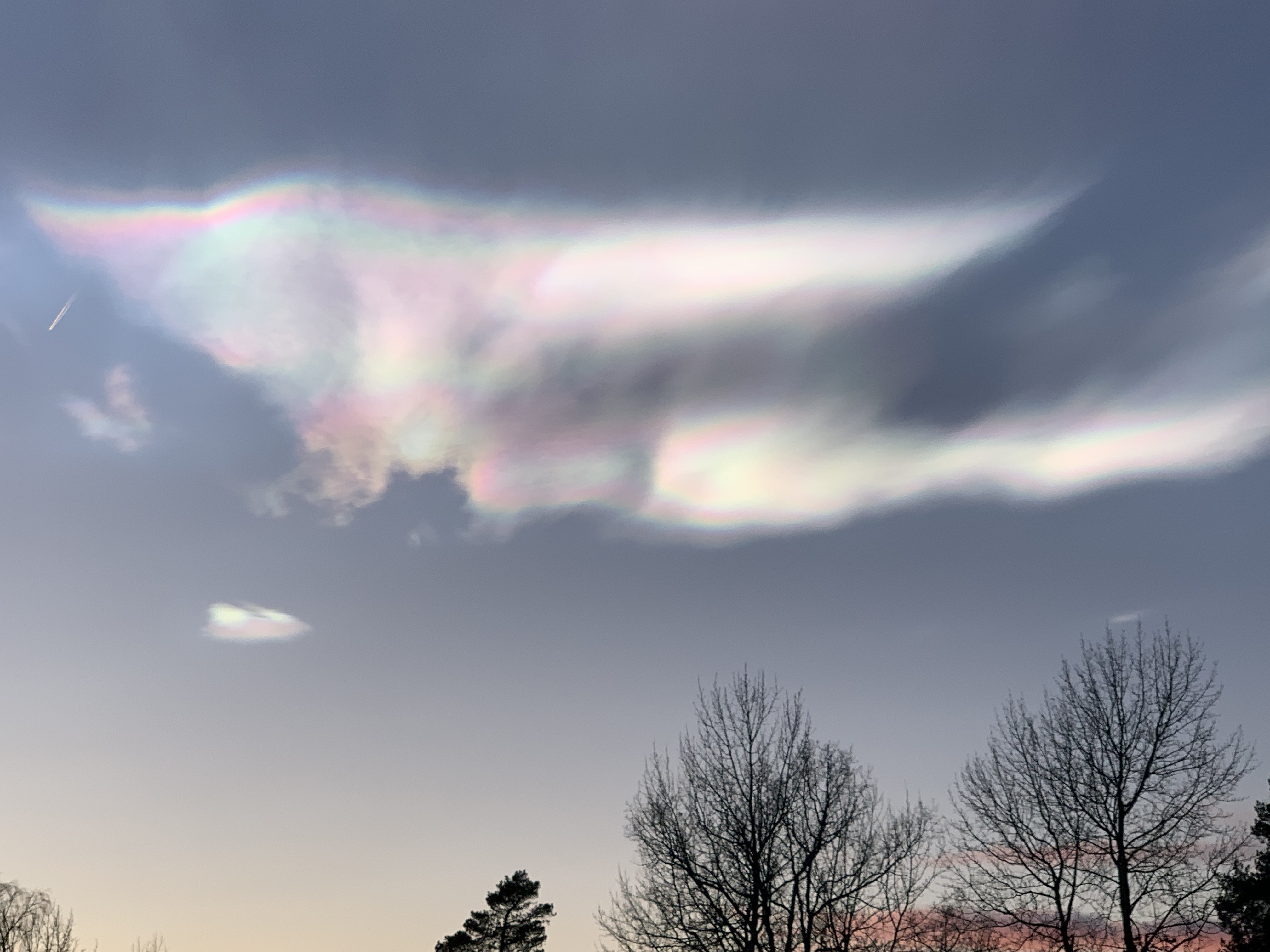
"They cheer me up like the Northern Lights, which we can sometimes see faintly in the sky to the north here in Oslo." Doyle continued.
Gaurav Madan also photographed the technicolor display from his office in Oslo, Norway.

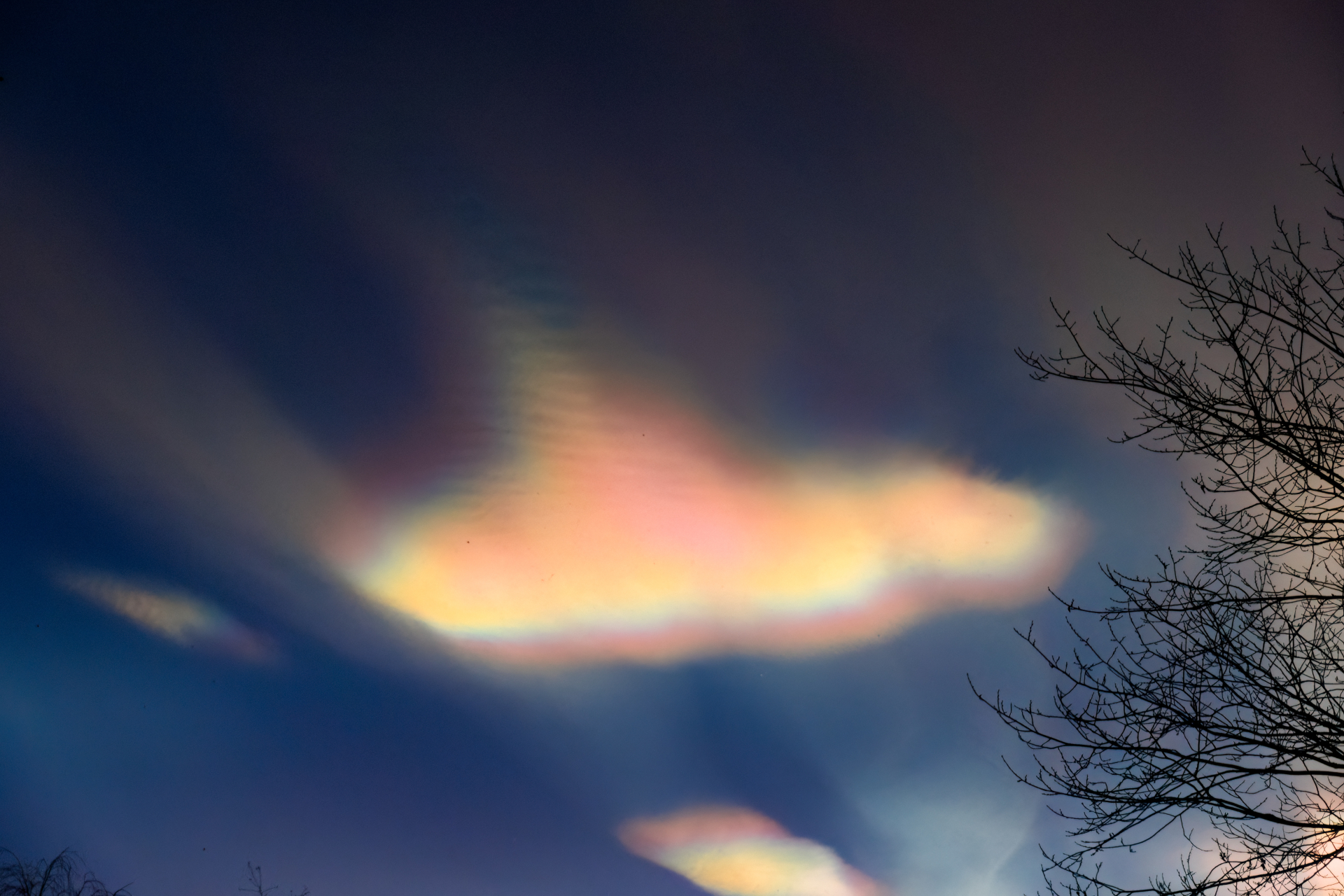



"It was a stunning display that lasted for about 30 minutes. Despite being ocean and climate researchers, every one of us at the office was thrilled to see the reflecting rainbow colors from the ice clouds that turned to pink and red as it got dark." Madan told Space.com.
Tuomas Olkkonen snapped these photographs of the polar stratospheric clouds above Jyväskylä, Finland.


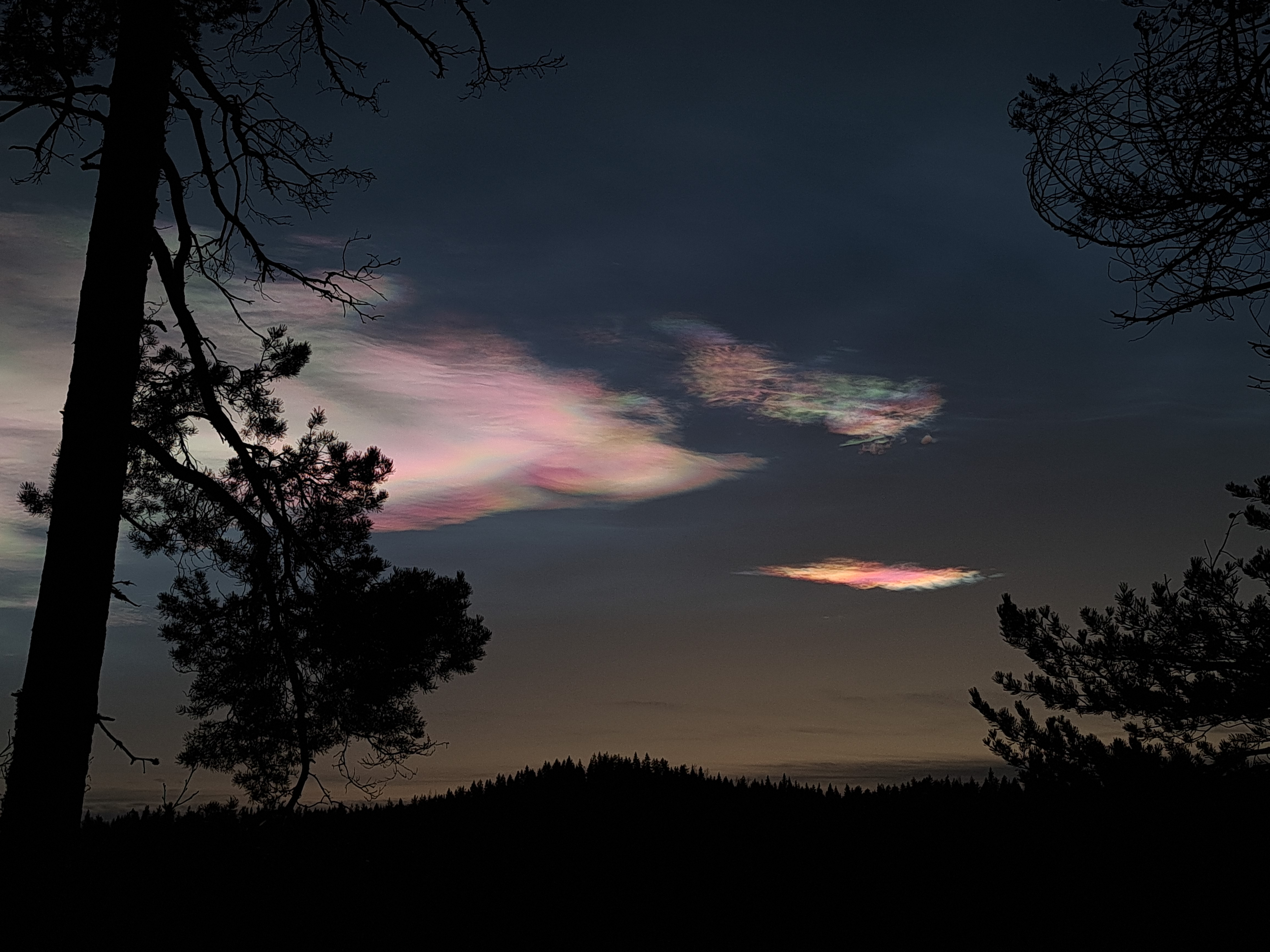

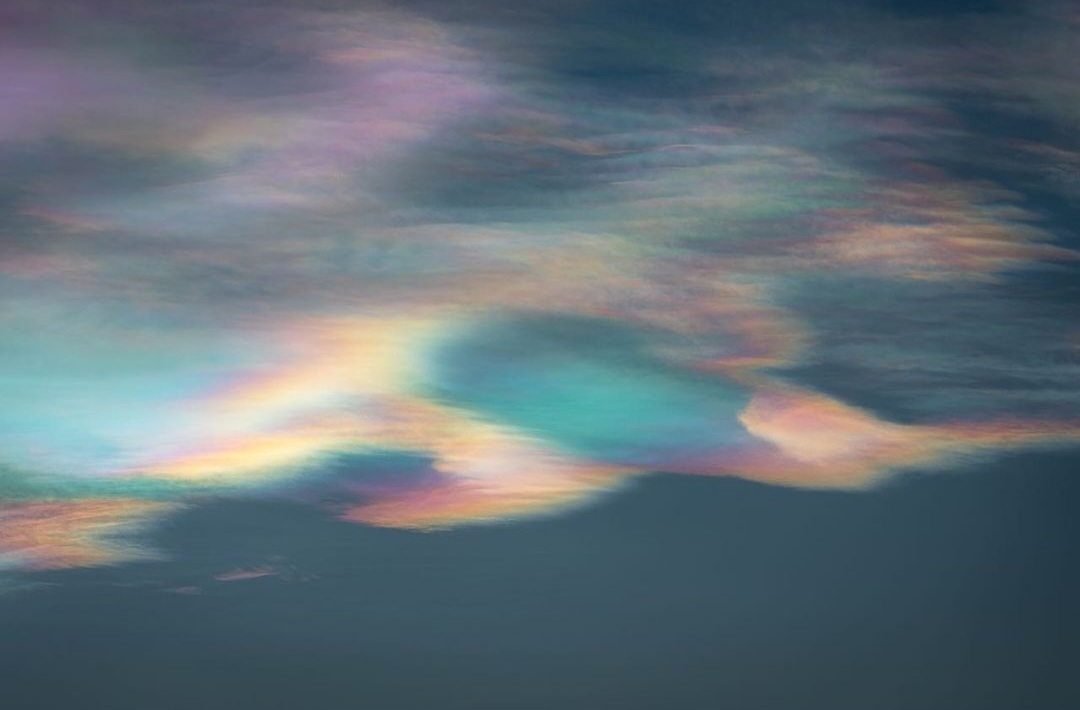
"Earlier that day we saw a tiny bright cloud really high up and my sister who's studied more about this subject said it could be a sign of polar stratospheric clouds." Olkkonen told Space.com. "She turned out to be right and it was great to see them for only the second time in my life."
Juha Posio also captured a photograph of colorful clouds above Taivalkoski, Finland. According to Posio, the colors were far brighter in real life and the photograph captured on their phone does not do the colors justice.
Polar stratospheric clouds were also photographed over Sweden's Ice Hotel in Jukkasjarvi, Sweden by Roy Rochlin.

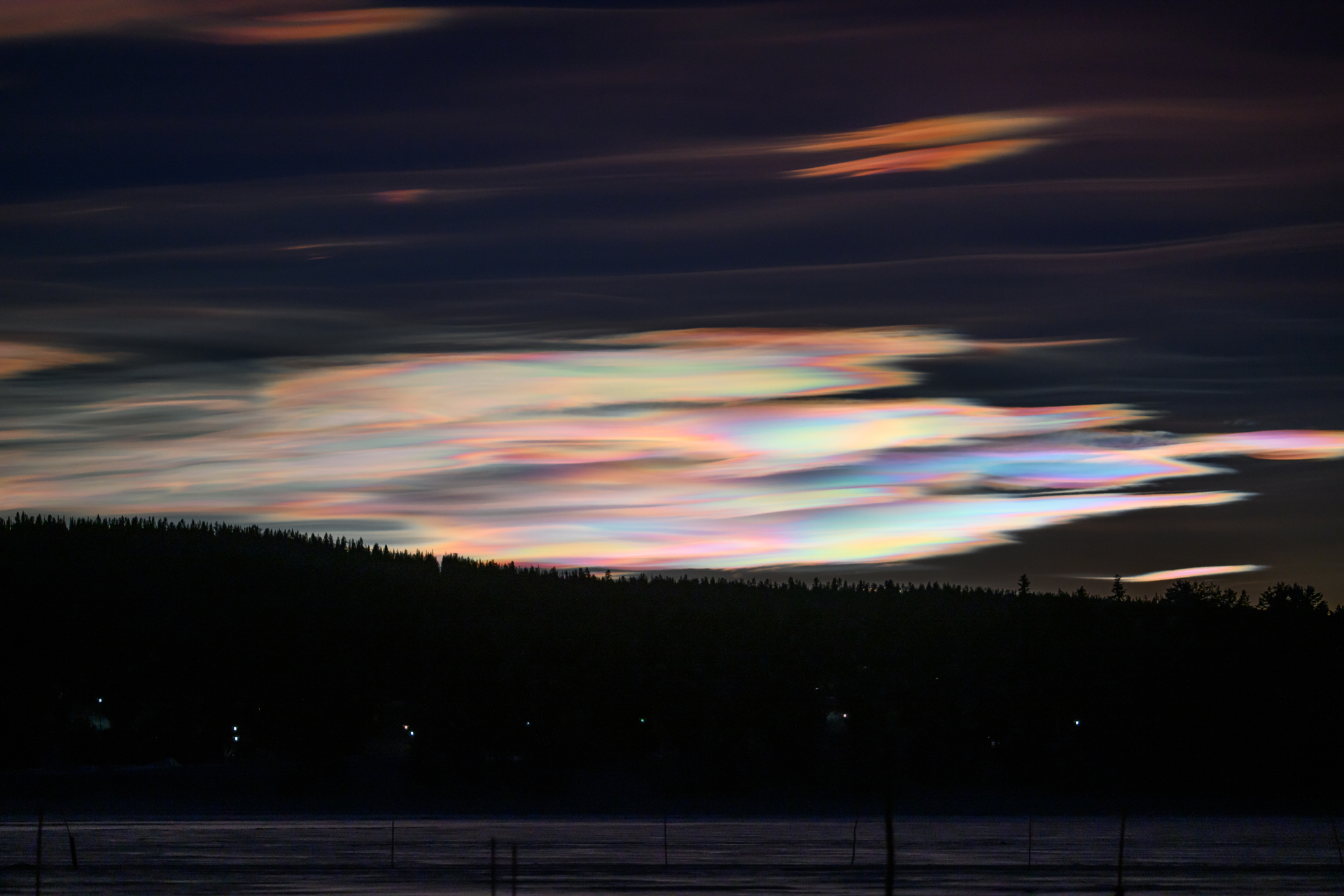
There is, however, a darker side to nacreous clouds. They play a key role in ozone destruction and are occurring more frequently in the Arctic.
Nacreous clouds contribute to ozone depletion in two ways. Firstly, they provide a surface that transforms harmless forms of chlorine into reactive forms that can destroy ozone. Secondly, they eliminate nitrogen compounds that mitigate the destructive effects of chlorine according to NASA.

Daisy Dobrijevic joined Space.com in February 2022 having previously worked for our sister publication All About Space magazine as a staff writer. Before joining us, Daisy completed an editorial internship with the BBC Sky at Night Magazine and worked at the National Space Centre in Leicester, U.K., where she enjoyed communicating space science to the public. In 2021, Daisy completed a PhD in plant physiology and also holds a Master's in Environmental Science, she is currently based in Nottingham, U.K. Daisy is passionate about all things space, with a penchant for solar activity and space weather. She has a strong interest in astrotourism and loves nothing more than a good northern lights chase!
